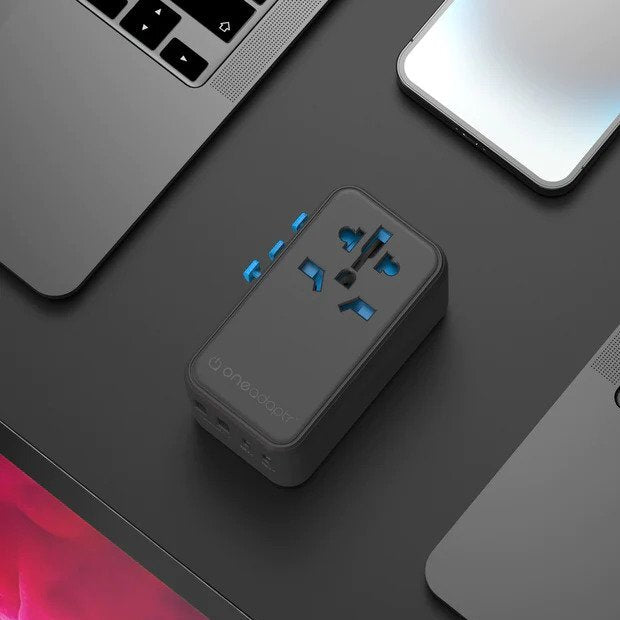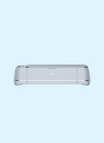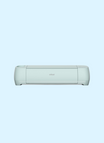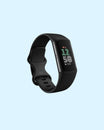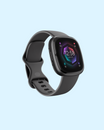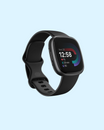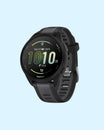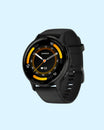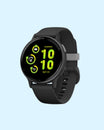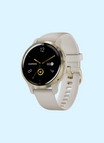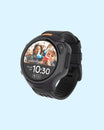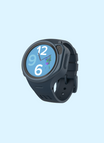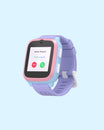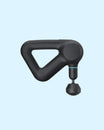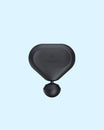TCL QM8 vs QM7
By Elisabeth Christ
Updated September 2024

As TCL continues to push the boundaries of television technology, the QM8 and QM7 models emerge as standout contenders in the premium TV market. With both models featuring advanced mini-LED backlighting, stunning design, and robust smart features, the choice between the two can be daunting. The QM8, with its high peak brightness and sophisticated processing power, appears to cater to those who demand the best in both visual and audio performance. Meanwhile, the QM7 offers a compelling alternative with its blend of affordability and high-end features, making it a formidable competitor. In this article, we’ll break down the differences between these two models, helping you determine which one aligns best with your viewing preferences and lifestyle needs.
Key Takeaways
The TCL QM8 and QM7 both deliver exceptional image quality, bolstered by mini-LED backlighting and high refresh rates, but the QM8 edges out with its superior brightness, broader color spectrum, and advanced APIQ Gen 3 processor. This model is ideal for those seeking top-tier performance, especially in brightly lit environments. On the other hand, the QM7, with its balanced feature set, including 1,248 dimming zones and 95% DCI-P3 color accuracy, offers a slightly more budget-friendly option without compromising on visual fidelity. Both models support next-gen gaming with HDMI 2.1 and FreeSync Premium Pro, making them versatile choices for gamers and cinephiles alike.


TCL QM8 Mini-LED TV
Premium Smart TV with Exceptional Picture Quality
✓ Sleek design with slim bezel
✓ APIQ Gen 3 processor
✓ Anti-glare screen
✓ Up to 144Hz

TCL QM7 Mini-LED TV
Advanced smart TV For an Immersive Experience
✓ FullView 360 Metal Bezel-less design
✓ Up to 1,248 dimming zones
✓ AIPQ Pro Processor
✓ Onkyo 2.1 Channel Speaker System
#1 Price Design

TCL QM8
At first glance, both the TCL QM8 and QM7 offer a sleek, modern aesthetic that’s characteristic of TCL’s high-end models. The QM8’s design, with its slim metal bezel and angled center-mounted stand, exudes sophistication, especially in its 65-inch variant. The QM7, however, elevates this elegance with its FullView 360 Metal Bezel-less design and a height-adjustable pedestal stand, making it a versatile option for varying living room setups. The QM8 takes a bold step by being the first in TCL’s lineup to offer a 98-inch model, with a design that includes feet mounted at either side for enhanced stability. Interestingly, both models diverge here, with the QM7 also offering a 98-inch variant, yet sticking to a more conventional stand design.
When it comes to remote control design, the QM8 opts for a long, thin wand with rubbery buttons, complete with direct access to popular streaming services like Netflix and Apple TV Plus. It also includes a built-in microphone for voice commands, which can be manually activated. The QM7 doesn’t lag behind; it integrates similar smart features but highlights its premium mini-LED panel, reinforcing its commitment to a high-quality viewing experience. Despite the QM8’s slightly higher price tag at $1,699 for the 65-inch model compared to the QM7's $1,099.99, the price difference reflects the additional enhancements and innovative design choices that come with the QM8.
#2 Image Quality

TCL QM7
In terms of image quality, the TCL QM8 is a powerhouse. It harnesses mini-LED backlighting with 1,080 local dimming zones in the 65-inch model, providing precise brightness control and deep black levels. This technology, combined with a peak brightness of up to 2,321 nits, makes the QM8 a strong contender in the high-end TV market, delivering vibrant visuals even in well-lit rooms. On the other hand, the QM7, with its up to 1,248 dimming zones and a maximum brightness of 2,000 nits, holds its ground well, though it falls slightly short in sheer luminance compared to the QM8.

TCL QM8
Where the QM8 truly shines is in its DCI-P3 coverage, boasting 97% and a BT.2020 coverage of 76.0%, ensuring a broad color spectrum that’s both accurate and immersive. The QM7, with its 95% DCI-P3 color accuracy and 100% color volume, offers a slightly narrower range but still delivers vibrant and true-to-life colors. Both models support Dolby Vision IQ and HDR10+, ensuring a cinematic experience with dynamic metadata that optimizes each frame's brightness and contrast. However, the QM8’s superior contrast and minimal light blooming effects give it a slight edge, making it a more appealing option for those seeking top-tier image quality.
#3 Sound Quality

TCL QM7
Sound quality is another arena where the QM8 and QM7 both excel, yet they cater to different audio preferences. The QM8 is equipped with a 2 x 10-watt speaker system complemented by a 20-watt subwoofer, offering a robust and dynamic audio experience. Its audio in Standard mode can be a bit too crisp for some tastes, but it shines in dialogue clarity, while the Movie mode enhances bass and spatiality, creating an immersive soundstage. The QM7, on the other hand, features an Onkyo 2.1 Channel Speaker System, which is a step up in audio refinement, providing a richer and more balanced sound profile with a subwoofer subtly positioned on the back of the TV.
Dolby Atmos and DTS Virtual support are present in both models, ensuring a multidimensional audio experience that enhances movie watching and gaming. The QM8’s advanced settings, including auto volume control and a multi-band equalizer, allow for personalized audio adjustments, making it a versatile choice for audiophiles. Conversely, the QM7’s audio system, while not as customizable, offers a more straightforward and robust out-of-the-box sound experience, appealing to those who prefer minimal tweaking and maximum impact.
#4 Smart Features & Connectivity

TCL QM8
When it comes to smart features, the QM8 and QM7 are both formidable, each integrating Google TV as their smart platform. This provides access to a wide array of streaming services and apps, along with Google Assistant, Alexa, and Apple HomeKit support, ensuring that these TVs fit seamlessly into any smart home ecosystem. The QM8, however, takes a slight lead with its APIQ Gen 3 processor, which enhances performance and responsiveness, particularly in navigating the user interface and streaming high-definition content. The QM7, powered by the AIPQ Pro Processor, isn’t far behind but focuses more on delivering exceptional image quality with 1,300 brightness zones and precise color accuracy.
In terms of connectivity, both models are well-equipped, featuring four HDMI ports with eARC support. The QM8 offers a bit more versatility with its composite-video/analog audio input, catering to those with legacy devices. Both TVs support HDMI 2.1, ensuring compatibility with the latest gaming consoles and enabling features like 4K 120Hz input. The inclusion of Bluetooth for wireless audio output in both models is a nod to modern convenience, allowing users to connect headphones or external speakers effortlessly.
#5 Gaming

TCL QM7
Gaming enthusiasts will find plenty to love in both the QM8 and QM7, though each model brings its own strengths to the table. The QM8’s gaming credentials are bolstered by its Game Accelerator, which supports up to 240Hz VRR gaming at 1080p resolution, making it an excellent choice for competitive gaming. With dual HDMI 2.1 ports and support for FreeSync Premium Pro, the QM8 ensures smooth, tear-free gameplay at up to 144Hz on HDMI input 1, offering a significant edge in fast-paced gaming scenarios. The QM7 is no slouch either, featuring Game Accelerator 240, Auto Low Latency Mode (ALLM), and a Game Bar, all of which combine to deliver a seamless and responsive gaming experience.

TCL QM8
Both TVs offer low input lag, with the QM8 clocking in at a mere 13ms in Game Master mode, ensuring that every command translates instantaneously on-screen. The QM7 matches this with its own impressive gaming features, including AMD FreeSync Premium Pro compatibility, which guarantees smooth gameplay with reduced screen tearing and stuttering. While the QM8’s slight advantage in brightness and color accuracy might appeal to gamers seeking the most visually stunning experience, the QM7’s robust feature set and lower price point make it a compelling alternative for those who want top-tier gaming performance without breaking the bank.
TCL QM8 vs QM7
Final Thoughts

TCL QM8 vs QM7
Choosing between the TCL QM8 and QM7 ultimately comes down to your specific needs and budget. If you're after the absolute best in brightness, contrast, and color accuracy, particularly in a large screen size, the QM8 is the clear winner, offering an unparalleled visual experience. However, if you’re looking for a more cost-effective option that still delivers impressive image quality and smart features, the QM7 is a strong contender. Both models are excellent choices, but your decision should reflect your priorities—whether that’s pushing the limits of your home theater setup or finding a great balance between performance and value.
If you like to read more about Smart TVs, check out our other relevant guides here:
Hisense U6K vs U7K
Hisense U6K vs U6N
Hisense U7K vs U8K
Hisense U7K vs U7N
Hisense U7N vs U8K
Hisense U8K vs U8N
Hisense U7N vs U8N
Hisense U6N vs U7N
Don't miss out on tech
Subscribe to our newsletter to stay up to date on the latest tech trends and guides on the best gadgets around.


